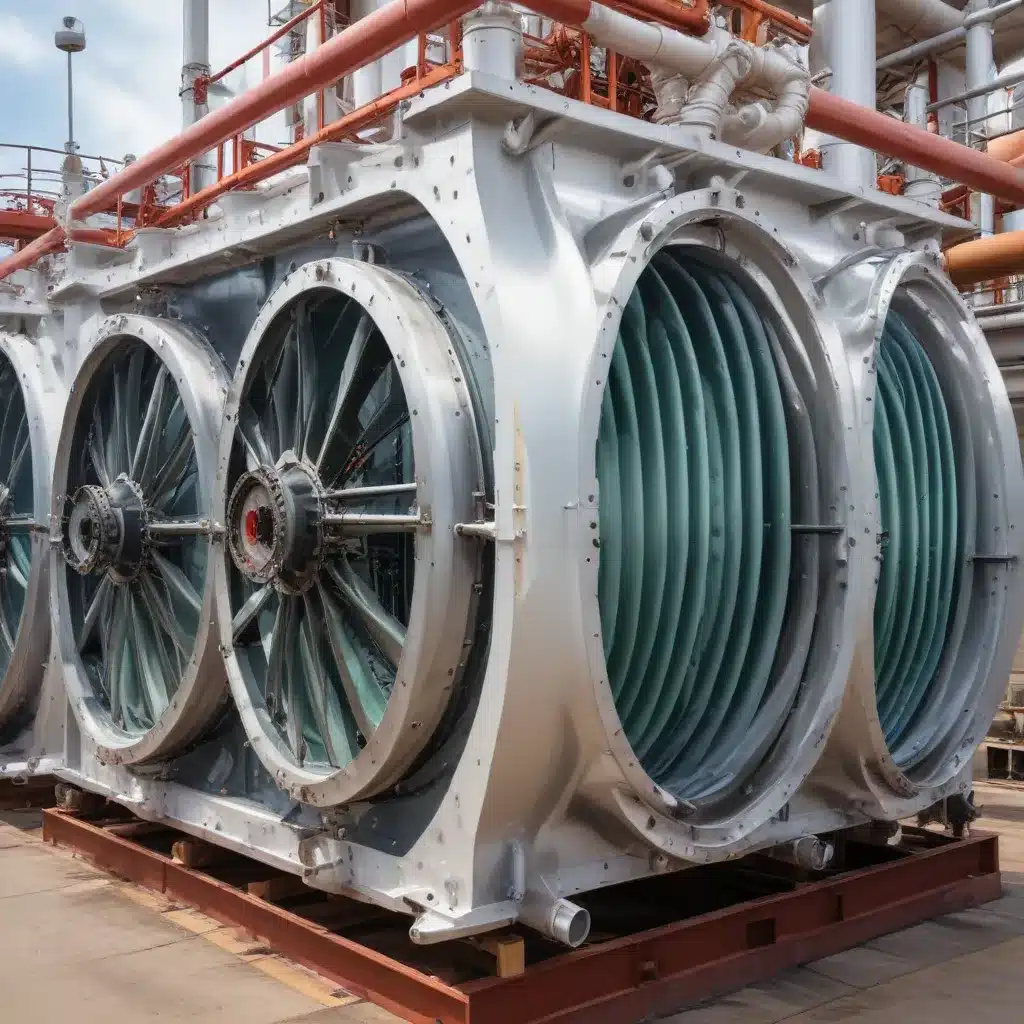
As a seasoned expert in air-cooled heat exchangers, I’m excited to share practical tips and in-depth insights to help optimize their performance and enhance thermal management in the oil and gas industry. Air-cooled heat exchangers play a crucial role in this sector, enabling efficient heat transfer and effective cooling solutions where water availability or cost is a concern.
Understanding the Importance of Air-Cooled Heat Exchangers in the Oil and Gas Industry
In the oil and gas industry, effective thermal management is paramount. From refining processes and power generation to petrochemical production and offshore operations, heat exchange systems are essential for maintaining optimal operating temperatures, improving energy efficiency, and ensuring process safety. Air-cooled heat exchangers have emerged as a preferred choice in this industry, offering several advantages over traditional water-cooled alternatives.
One of the primary benefits of air-cooled heat exchangers is their ability to function effectively in regions with limited water resources or high water costs. In many oil and gas facilities, access to a reliable supply of cooling water can be a challenge, making air-cooled heat exchangers a practical and sustainable solution. By utilizing ambient air as the cooling medium, these exchangers eliminate the need for dedicated water sources, reducing operational expenses and environmental impact.
Moreover, air-cooled heat exchangers are known for their robust construction, designed to withstand the harsh environmental conditions often encountered in the oil and gas industry. They are less susceptible to fouling and scaling compared to water-cooled systems, reducing maintenance requirements and ensuring continuous, reliable performance.
Optimizing Air-Cooled Heat Exchanger Design for Enhanced Thermal Management
Achieving optimal performance from air-cooled heat exchangers in the oil and gas industry requires a comprehensive understanding of their design and engineering principles. Here are some key considerations for optimizing their thermal management capabilities:
Fin Design and Geometry
The fin design and geometry of air-cooled heat exchangers play a critical role in their heat transfer efficiency. Factors such as fin density, thickness, and configuration can significantly impact the heat transfer coefficient and air-side pressure drop. By carefully selecting the optimal fin design, engineers can maximize heat dissipation while minimizing energy consumption required for air circulation.
Air Flow Optimization
Ensuring efficient air flow across the heat exchanger is essential for optimal performance. This can be achieved through strategic placement and orientation of the heat exchanger, as well as the design of the air inlet and outlet configurations. Incorporating computational fluid dynamics (CFD) analysis can help identify and mitigate any potential air flow obstructions or turbulence, ensuring uniform air distribution and maximizing heat transfer.
Material Selection and Corrosion Resistance
The harsh operating environments encountered in the oil and gas industry, such as exposure to corrosive chemicals, high temperatures, and humid conditions, necessitate the use of durable materials for air-cooled heat exchangers. Careful selection of materials, including the heat transfer surfaces, structural components, and protective coatings, can enhance the exchanger’s resistance to corrosion and extend its service life.
Modular Design and Scalability
Flexibility and scalability are crucial in the oil and gas industry, where operational demands and capacity requirements can fluctuate. Air-cooled heat exchangers with modular designs allow for easy expansion, retrofitting, or reconfiguration to accommodate changing process needs, ensuring the system remains optimized for thermal management throughout its lifecycle.
Integrated Monitoring and Control Systems
Incorporating advanced monitoring and control systems into air-cooled heat exchangers can significantly improve their performance and reliability. Real-time data collection, predictive maintenance algorithms, and automated control mechanisms can help identify and address potential issues, optimize energy consumption, and ensure consistent thermal management.
Maintenance and Troubleshooting Strategies for Air-Cooled Heat Exchangers
Proper maintenance and proactive troubleshooting are critical for maintaining the optimal performance of air-cooled heat exchangers in the oil and gas industry. Here are some key strategies to consider:
Periodic Inspections and Cleaning
Regular inspections and cleaning of air-cooled heat exchangers are essential to address common issues such as fouling, corrosion, and mechanical wear. This includes inspecting the fin surfaces, air flow paths, and structural components, as well as cleaning the heat transfer surfaces to maintain heat transfer efficiency.
Vibration and Noise Monitoring
Monitoring the vibration and noise levels of air-cooled heat exchangers can help detect early signs of mechanical issues, such as fan or bearing malfunctions. By addressing these problems promptly, operators can prevent unexpected breakdowns and ensure the continued reliable performance of the equipment.
Optimizing Air Flow and Pressure Drop
Regularly assessing the air flow and pressure drop across the heat exchanger can help identify any obstructions or efficiency losses. This may involve cleaning the air-side surfaces, adjusting fan speeds, or addressing any changes in the air inlet or outlet configurations.
Predictive Maintenance and Condition Monitoring
Implementing predictive maintenance strategies, such as condition monitoring systems, can help anticipate potential issues and plan for proactive maintenance. By continuously monitoring key parameters, such as vibration, temperature, and corrosion levels, operators can identify emerging problems and address them before they lead to costly downtime.
Collaboration with Experienced Suppliers
Partnering with experienced air-cooled heat exchanger suppliers and service providers can significantly enhance the performance and longevity of these critical components. These industry experts can offer guidance on optimizing design, provide tailored maintenance recommendations, and support troubleshooting efforts, ensuring the heat exchangers operate at peak efficiency throughout their lifecycle.
Conclusion
Air-cooled heat exchangers are essential for effective thermal management in the oil and gas industry, providing reliable and sustainable cooling solutions where water resources are limited or costly. By understanding the key design considerations, maintenance strategies, and industry best practices, operators can optimize the performance of these critical components and enhance the overall efficiency and reliability of their thermal management systems.
At https://www.aircooledheatexchangers.net/, we are committed to providing our clients with the expertise and resources necessary to achieve the highest levels of thermal management in the oil and gas sector. Our team of seasoned professionals is here to assist you in selecting, designing, and maintaining air-cooled heat exchangers that meet your unique operational requirements, ensuring optimal energy efficiency, process safety, and environmental responsibility.

